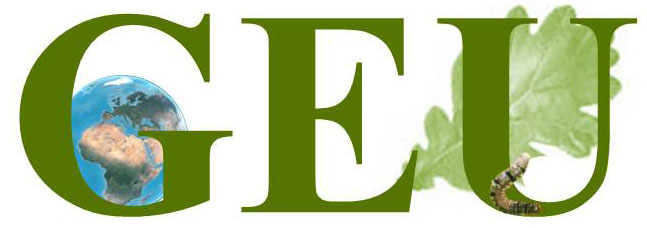
Large herbivores are a major agent in ecosystems, influencing vegetation structure and carbon and nutrient flows (shattering woody vegetation and consuming large amounts of foliage). Despite the non-negligible ecological impacts of large herbivores, most of the current DGVMs, or land surface models that include a dynamic vegetation module, lack explicit representation of large herbivores and their interactions with vegetation.
During the last glacial period, the steppe-tundra ecosystem prevailed on the unglaciated northern lands, hosting a high diversity and density of megafaunal herbivores. The apparent discrepancy between the late Pleistocene dry and cold climates and the abundant herbivorous fossil fauna found in the mammoth steppe biome has provoked long-standing debates, termed as “productivity paradox” by some paleontologists.
In a new study in the journal Nature Ecology and -Evolution scientists, aiming to address the productivity paradox, incorporated a grazing module in the ORCHIDEE-MICT DGVM model. “This grazing module is based on physiological and demographic equations for wild large grazers, describing grass forage intake and metabolic rates dependent on body size, and demographic parameters describing the reproduction and mortality rates of large grazers”, explained Dr. Dan Zhu from the Laboratoire des Sciences du Climat et de l’Environnement, LSCE CEA CNRS UVSQ, France.
In the study authors also extended the modelling domain to the globe for two distinct periods, present-day and the last glacial maximum (ca. 21 ka BP). The present-day results of potential grazer biomass, combined with an empirical land use map, infer a reduction of wild grazer biomass by 79-93% due to anthropogenic land replacement over natural grasslands.
For the last glacial maximum, authors find that the larger mean body size of mammalian herbivores than today is the crucial clue to explain the productivity paradox, due to a more efficient exploitation of grass production by grazers with a larger-body size. Evidences from fossil and extant mammal species have shown a long-term trend towards increasing body size in mammals throughout the Cenozoic, this indicates selective advantages of larger body sizes, such as larger guts of herbivores that allow microbes to break down low-quality plant materials, and higher tolerance to coldness and starvation. “Our results show quantitatively the importance of body size to explain the productivity paradox, as a larger-body size enables grazers to live on the mammoth steppe in substantial densities during the LGM, despite colder temperatures and shorter growing seasons than today”, said Dr. Philippe Ciais from the Laboratoire des Sciences du Climat et de l’Environnement, LSCE CEA CNRS UVSQ, France.
For the authors large herbivores might have fundamentally modified Pleistocene ecosystems; therefore, “to bring them into large-scale land surface models would help us better understand the intricate interactions among climate, plants and animals that shaped the biosphere”, said Prof. Josep Peñuelas from CREAF-CSIC Barcelona.
Journal Reference: Zhu, D., CIiais, P., Chang, J., Krinner, G., Peng, S., Viovy, N., Peñuelas, J., Zimov, S. 2018. The large mean body size of mammalian herbivores explains the productivity paradox during the last glacial maximum. Nature Ecology & Evolution
